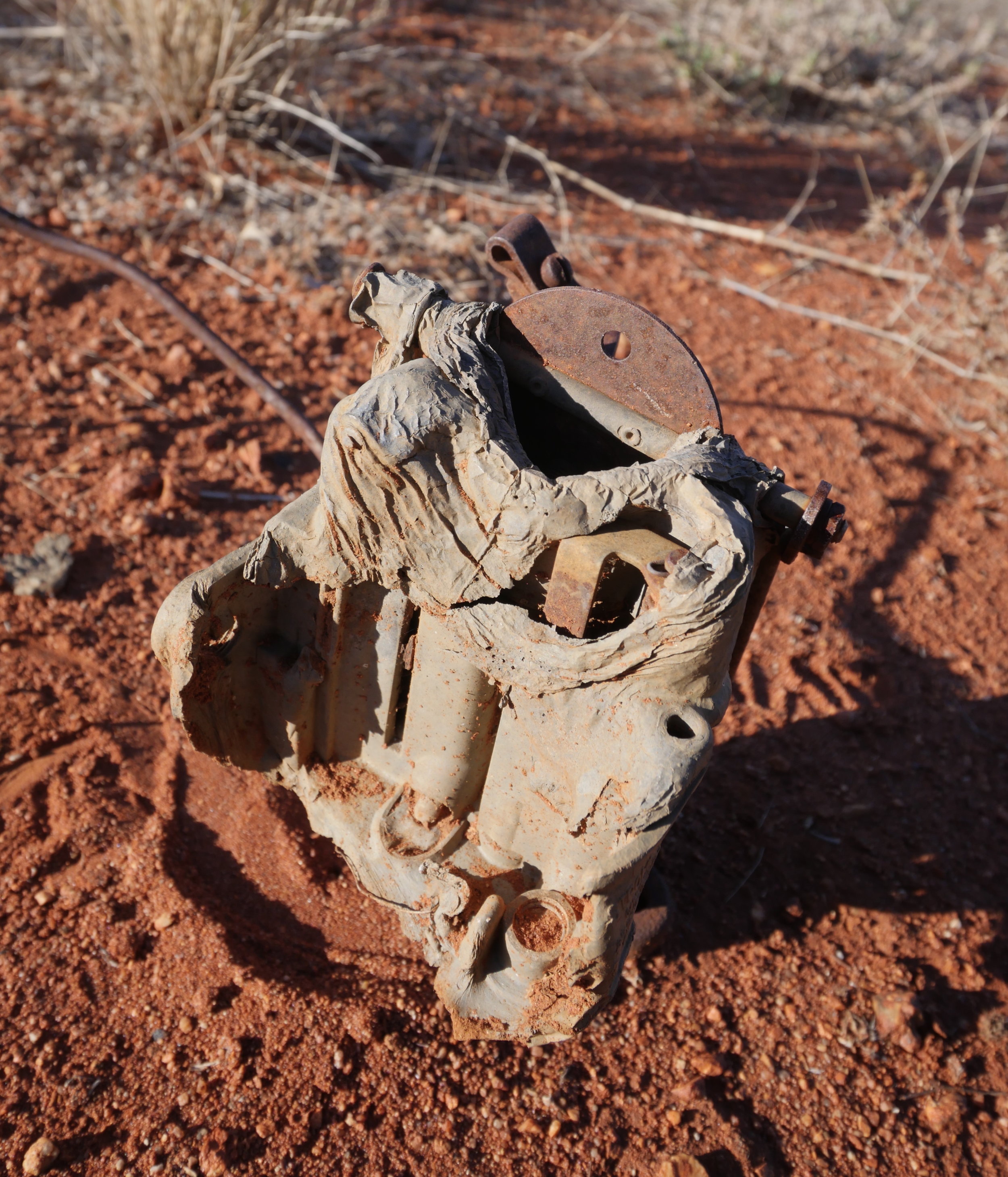Here’s something I’ve concluded over three trips to Australia and a cumulative 15,000 kilometers or so of driving: Ninety percent of the time, 90 percent of Australia’s great historic tracks are more or less simply very, very long dirt roads that traverse vast expenses of bush and desert—terrain that can be considered strikingly beautiful or forbiddingly barren, depending on your sense of aesthetics. (Count me firmly in the former group.)
All that changes when it rains and many of those tracks become simply undriveable, and a few routes (such as driving east to west on the Madigan Line) require skill and frequent four-wheel-drive use even in optimal conditions, but otherwise such legendary routes as the Birdsville Track can easily be driven in a Subaru Outback—or a Corolla. The world-class corrugations (washboard) you’ll find will test the structural integrity of the stoutest chassis, but your Land Cruiser’s dual lockers and low range will go unused.
With that said, one aspect of travel in central and western Australia has never been exaggerated: It is a very, very remote region. Even on the Oodnadatta Track—one of the most popular routes in the Outback—we sometimes drove for hours without seeing another vehicle. On other tracks, such as the Madigan Line, you can go a week not knowing if all other humans on the planet have been raptured away. So while ultimate capability might not be a critical requirement in your outback conveyance, reliability surely is, along with your ability to repair likely problems if you travel solo.
Tales of epic repairs, jury-rigged and otherwise, abound in outback literature—and video: If you’ve seen Bush Mechanics on YouTube you’ve been exposed to the wackier side of this skill, but real, and sometimes desperate, examples abound.
However, I found myself wondering if the owner of the vehicle whose parts I found in the Australian desert had the skills, and the spare components, to recover it.
We were camped in a wash off Mulga Park Road, actually a renamed section of Australian legend Len Beadell’s Gunbarrel Highway, about 150 kilometers southeast of Uluru (aka Ayers Rock). I was wandering through the scrub with my binoculars in pursuit of a new bird (which, if you’re curious, turned out to be a western bowerbird, a prime find), when I caught a dull glint of metal among the grass. A closer look revealed it to be an ancient single-barrel carburetor—one side of which was melted aluminum slag, the obvious result of a serious engine-compartment fire. The choke plate was locked in place by wrinkled solidified rivulets of non-ferrous metal; where the float bowl had been was an amorphous gray blob. The aluminum base appeared to be fine, leading me to think the fire might have been contained relatively quickly. However, the cast iron throttle plate housing was still attached to the bottom, as was linkage. If my broken-down fellow traveler had access to a spare carburetor I would have thought the ancillary fittings would have been swapped out.
Then the mystery deepened considerably—a few meters away I found an entire rear axle assembly, almost certainly from the same vehicle as the carb, judging by its configuration. Nothing else within a subsequent search circle of 50 meters or more—just an orphaned carburetor and axle from a vehicle at least a half century old, if not much older.
The carb on its own suggested a straightforward breakdown scenario. The addition of the axle left me scratching my head. I’m afraid this mystery will remain one.



